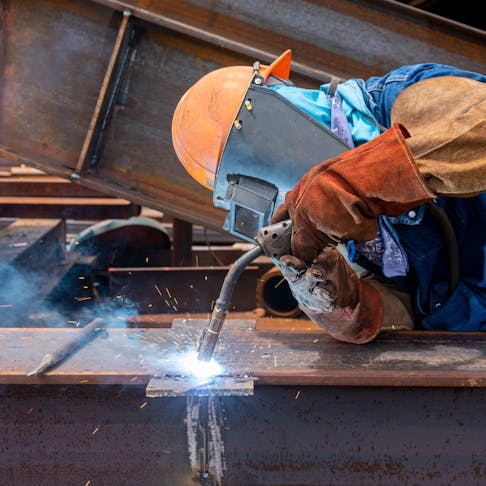Why a Welding WPS is Crucial: Enhancing Consistency and Conformity
Why a Welding WPS is Crucial: Enhancing Consistency and Conformity
Blog Article
The Ultimate Overview to Welding WPS Procedures: A Comprehensive Introduction for Welders
In the elaborate globe of welding, Welding Treatment Specifications (WPS) function as the backbone of making certain quality, consistency, and safety in welding operations. Understanding the subtleties of developing, carrying out, and keeping track of WPS treatments is crucial for welders aiming to boost their craft and meet sector criteria. As we explore the various components of a WPS and discover the details of certification and qualification, we will uncover the essential role these treatments play in the realm of welding. Allow's start a trip to unwind the intricacies and importance of WPS treatments in welding practices.
Significance of WPS Procedures
Comprehending the value of Welding Treatment Specifications (WPS) treatments is crucial for guaranteeing the top quality and honesty of bonded structures. WPS procedures act as a roadmap for welders, laying out the necessary steps, parameters, and materials called for to attain an audio weld. By adhering to WPS guidelines, welders can make certain consistency in their job, leading to structurally audio and trusted welds.
One of the main factors why WPS procedures are important is their duty in preserving weld top quality and stability. Adhering to the defined welding criteria and techniques described in the WPS assists prevent issues such as porosity, breaking, or insufficient combination, which can endanger the toughness and toughness of the weld.

Parts of a WPS
A Welding Treatment Spec (WPS) typically comprises necessary components that detail the certain demands for carrying out a weld, guaranteeing uniformity and quality in the welding procedure. The key components of a WPS include essential variables such as base steels, filler metals, interpass and preheat temperatures, welding processes, protecting gases, welding placements, and post-weld warmth treatment needs.
Base metals refer to the materials being signed up with, while filler steels are made use of to fill up the void between the base metals during welding. The welding process details the certain technique to be made use of, whether it's gas metal arc welding (GMAW), shielded steel arc welding (SMAW), or an additional technique. Welding positions specify the alignments in which welding can be done.

Qualification and Certification
Having actually established the essential parts of a Welding Treatment Requirements (WPS), the emphasis now moves towards the essential elements of credentials and qualification in welding methods.

Certification, on the other hand, is the official acknowledgment of a welder's qualifications by a pertinent accreditation body or organization. Welding certifications are normally based on the specific welding procedures, materials, and settings a welder is qualified to collaborate with. Holding a valid welding accreditation shows that a welder meets market criteria and is qualified to do welding jobs to the required specifications.
Creating a WPS
To develop a Welding Treatment Spec (WPS) that satisfies industry standards, mindful consideration of welding her latest blog procedures, materials, and operational parameters is necessary. The first action in creating a WPS is to identify the welding procedure to be made use of, such as gas steel arc welding (GMAW) or shielded steel arc welding (SMAW)

Applying and Keeping Track Of WPS
Upon finalizing the comprehensive Welding Procedure Requirements (WPS) that meticulously details welding procedures, products, operational criteria, and quality control steps, the emphasis changes to effectively carrying out and monitoring the recognized treatments. Implementation includes making sure that all welders associated with the project recognize with the WPS and follow it thoroughly throughout the welding process. This requires supplying sufficient training and guidance to assure adherence to the specified treatments. Monitoring the WPS involves continuous oversight to verify that welding activities align with the recorded specifications. Examinations, screening, and quality assurance steps are necessary components of the monitoring procedure to identify any discrepancies or problems without delay. Routine audits and evaluations of the welding procedures help you could look here in maintaining consistency and top quality throughout the task. Reliable application and tracking of the WPS are vital for making sure the honesty, stamina, and safety and security of the welded joints, ultimately adding to the overall success of the welding job.
Verdict
To conclude, understanding and complying with Welding Procedure Specifications (WPS) is critical for welders to ensure top quality, uniformity, and security in their job. By knowing the elements of a WPS, getting appropriate credentials and qualifications, producing thorough treatments, and carrying out and checking them effectively, welders can improve their abilities and proficiency in welding techniques. Abiding by WPS treatments is important for producing premium welds and meeting market criteria.
In the detailed world of welding, Welding Treatment Requirements (WPS) offer as the foundation of guaranteeing top quality, consistency, and safety in welding procedures. The welding process lays out the details strategy to be used, whether it's gas metal arc welding (GMAW), protected metal arc welding (SMAW), or one more approach.To create a Welding Treatment Spec (WPS) that fulfills industry criteria, mindful consideration of welding procedures, products, and operational criteria is vital. The first action in developing a WPS is to identify the welding this contact form process to be made use of, such as gas steel arc welding (GMAW) or shielded steel arc welding (SMAW)Upon completing the thorough Welding Procedure Requirements (WPS) that carefully information welding procedures, products, operational specifications, and high quality guarantee steps, the emphasis moves to effectively executing and monitoring the recognized treatments.
Report this page